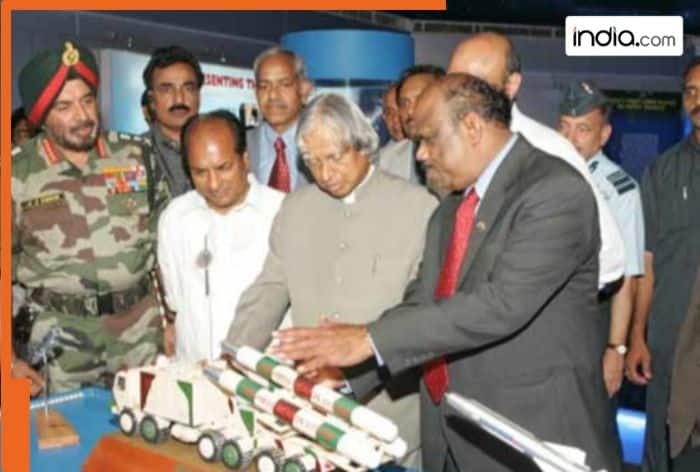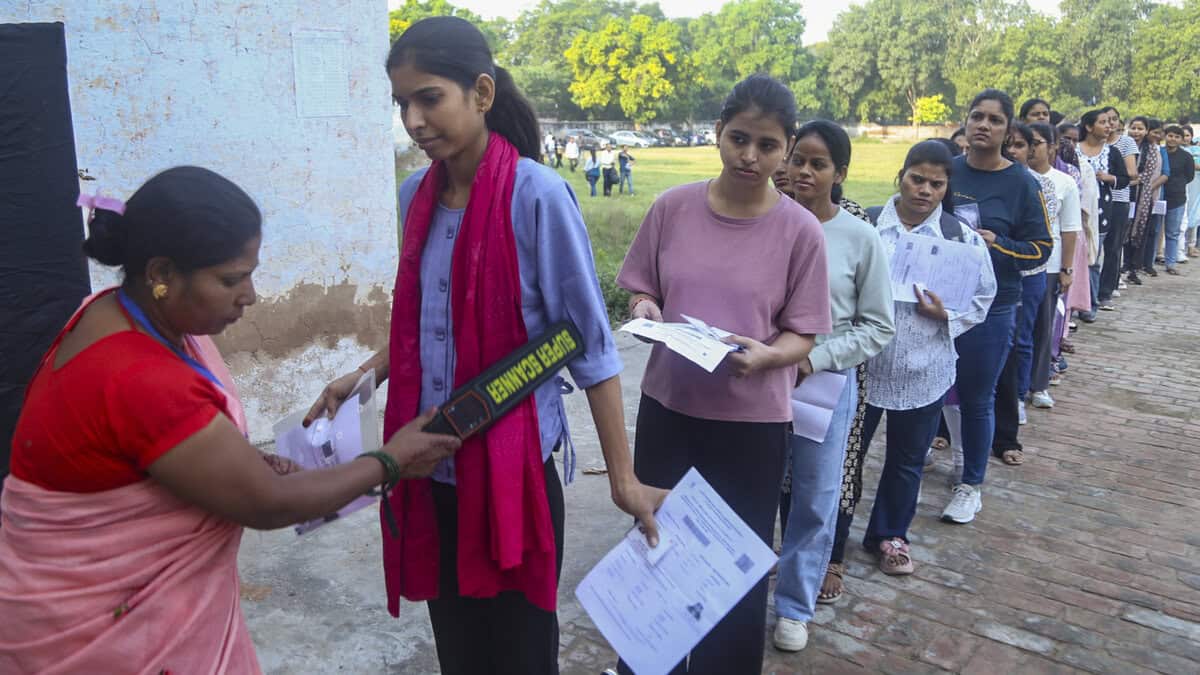In 1998, BrahMos Aerospace was established as a joint venture, with India and Russia as equal partners. The name itself – combining Brahmaputra and Moskva – symbolized the partnership that Kalam had envisioned.

On October 15, 1931, in the small island town of Rameswaram, Tamil Nadu, a boy was born who would one day walk into a Russian facility, see a half-completed supersonic cruise missile, and recognize India’s future. Dr. Avul Pakir Jainulabdeen Abdul Kalam, who passed away on July 27, 2015, was the man whose sharp scientific eye and strategic vision brought the BrahMos missile to India, transforming the nation’s defence capabilities forever. He would go on to become India’s 11th President, beloved as the “People’s President,” but his greatest gifts to the nation were the missiles that guard our borders and the scientific temper he instilled in millions.
Today, as we remember him on his birth anniversary, one of his most remarkable yet lesser-known achievements deserves recognition – how a single visit to Russia and a moment of insight changed the trajectory of India’s military power. The story of BrahMos is not just about technology transfer; it is about Kalam’s ability to see potential where others saw only half-finished projects, and his determination to bring that potential to Indian shores.
In the mid-1990s, Dr. Kalam, then serving as Scientific Adviser to the Defence Minister, was on an official visit to Russia. The Cold War had ended, the Soviet Union had collapsed, and Russia was going through economic turmoil. Many of its ambitious defence projects were languishing due to lack of funds and changing priorities. During this visit, Kalam was taken to the facilities of NPO Mashinostroyeniya, one of Russia’s premier missile design bureaus.
There, in a Russian facility, Kalam encountered something extraordinary – a partially developed supersonic cruise missile project called P-800 Oniks. The Russians had been working on creating one of the world’s fastest cruise missiles, but the project had stalled midway due to funding constraints and the chaos following the Soviet collapse. What others might have dismissed as an abandoned project, Kalam saw as a golden opportunity for India.
His scientific mind immediately grasped the potential. Here was a missile technology that, if completed, would be decades ahead of what India possessed. It could travel at nearly three times the speed of sound, making it virtually unstoppable by existing defence systems. It could be adapted for multiple platforms – ships, submarines, aircraft, and land-based launchers. Most importantly, the Russians were willing to partner because they needed investment to complete their stalled project, and India needed cutting-edge technology.
What followed was vintage Kalam – combining technical expertise with diplomatic skill and strategic foresight. He understood that this was not just about buying a weapon system; it was about creating a partnership where India would not be a mere purchaser but a co-developer and co-owner. He recognized that if structured correctly, this collaboration could transfer crucial technology to India while allowing Indian scientists to learn and eventually master supersonic cruise missile technology.
Kalam’s enthusiasm and conviction were infectious. He convinced the Indian political and military establishment that this half-finished Russian project could be transformed into a game-changing weapon for India. He negotiated with the Russians not from a position of weakness but as an equal partner offering them something they desperately needed – capital and a committed partner to complete their ambitious project.
In 1998, BrahMos Aerospace was established as a joint venture, with India and Russia as equal partners. The name itself – combining Brahmaputra and Moskva – symbolized the partnership that Kalam had envisioned. But more importantly, the structure ensured that Indian scientists would work alongside Russian experts, learning every aspect of the technology. Kalam had seen not just a half-finished missile in that Russian facility; he had seen a vehicle for technology transfer and capability building for India.
The challenges of completing the project were immense. What the Russians had left half-done needed to be finished, tested, and adapted for Indian requirements. Different engineering cultures had to merge, bureaucracies had to be navigated, and technical problems solved. But Kalam’s initial vision provided the guiding light. He had brought the opportunity to India; now Indian scientists, many of whom had worked under Kalam on the Agni and Prithvi programmes, would prove worthy of his faith.
When BrahMos achieved its first successful test flight on June 12, 2001, it vindicated Kalam’s judgment from that day in the Russian facility. By this time, Kalam had already become a national hero, having played a crucial role in the Pokhran-II nuclear tests of 1998. The missile that had been gathering dust half-finished was now complete, deadly, and bearing an Indian identity. Traveling at Mach 2.8 to Mach 3, with pinpoint accuracy and the ability to carry a 300-kilogram warhead, BrahMos became one of the world’s most feared weapons.
Just a year later, in 2002, this scientist who had devoted his life to India’s defence would be elected as the nation’s 11th President. His presidency from 2002 to 2007 was unlike any other. The Rashtrapati Bhavan, which had been home to viceroys and formal presidents, was transformed by Kalam’s presence. He made it accessible to common people, especially students. He replied to thousands of letters personally, met with schoolchildren, and used his position to inspire millions to dream big and work hard.
Even as President, Kalam never forgot his roots as a scientist and defence technologist. He continued to advocate for indigenous defence development, self-reliance in technology, and investment in research and development. He used the moral authority of his office to push for educational reforms and scientific temper. The man who had brought BrahMos to India now worked to ensure that future generations of Indians would create even more remarkable technologies.
The strategic implications of BrahMos were transformative, and nowhere was this more powerfully demonstrated than during Operation Sindoor in May 2025. Following a devastating terror attack in Jammu and Kashmir, India launched a coordinated military response that would showcase the full lethal potential of the weapon system Kalam had envisioned decades earlier.
On May 7, 2025, Operation Sindoor began as a multi-pronged offensive that placed BrahMos at the very center of India’s retaliatory strike capability. The missile, deployed in both air-launched and ground-launched variants, became the primary offensive weapon of the Indian Armed Forces during this critical operation. Sukhoi-30MKI fighter jets, armed with air-launched BrahMos missiles, struck deep into Pakistani territory, hitting strategic airbases including the critical Noor Khan facility. The precision of these strikes was extraordinary – BrahMos achieved near one-meter accuracy, destroying runways, command centers, ammunition depots, and hardened military bunkers with surgical precision.
Ground-based mobile BrahMos launchers complemented the aerial assault, targeting terrorist infrastructure and military installations across the border. The Indian Navy’s BrahMos-equipped vessels stood ready in the Arabian Sea, reinforcing India’s sea control and threatening high-value targets. The versatility that Kalam had foreseen – a single weapon system operational across army, navy, and air force – proved decisive. BrahMos became the only supersonic cruise missile in the world to be simultaneously deployed across all three services in active combat operations.
The four-day Operation Sindoor marked the first live combat usage of BrahMos, and its performance exceeded all expectations. The supersonic speed – traveling at nearly three times the speed of sound – gave enemy air defense systems mere seconds to respond, rendering them largely ineffective. The “fire and forget” capability allowed Indian forces to launch and immediately take evasive action, minimizing risk to personnel and platforms. The stand-off range meant Indian aircraft could strike without entering heavily defended airspace.
DRDO Chairman later confirmed that BrahMos led the offensive strikes while indigenous air defense systems like Akash and MRSAM provided protective cover. Prime Minister Narendra Modi and Defence Minister Rajnath Singh publicly credited the indigenous weapon systems, particularly BrahMos, for providing India with overwhelming offensive capability and achieving decisive battlefield results. Home Minister Amit Shah explicitly confirmed that India had used BrahMos missiles to destroy Pakistani military bases during Operation Sindoor.
The success had immediate strategic consequences. Within weeks of the operation, the Indian Air Force and Navy announced mega orders for additional BrahMos missiles, recognizing the system as central to India’s defense doctrine. The combat-proven effectiveness of BrahMos also transformed it into India’s most successful defense export, with multiple countries expressing renewed interest in acquiring the system. Operation Sindoor became, in the words of defense analysts, “a sharp sales pitch” for Indian military technology on the global stage.
But the true genius of Kalam’s decision became apparent over the years leading up to Operation Sindoor. BrahMos was not just a weapon; it became a platform for Indian technological growth. Indian engineers mastered complex technologies – ramjet propulsion, supersonic aerodynamics, advanced guidance systems, and multi-platform integration. Manufacturing facilities were established in India. An entire ecosystem of suppliers and component manufacturers emerged. Thousands of engineers gained expertise in cutting-edge missile technology.
The half-finished Russian project that Kalam had spotted became fully Indian in spirit and capability. Indigenous content in BrahMos steadily increased to over 70 percent. Indian innovations improved the missile’s performance beyond original specifications. The initial range of 290 kilometers, limited by international technology control regimes, was extended to 450 kilometers after India joined the Missile Technology Control Regime in 2016. Newer variants now boast ranges exceeding 800 kilometers. New versions were developed – submarine-launched, air-launched from fighters, and even a hypersonic variant under development. The student had not only learned from the teacher but was now innovating independently and pushing the boundaries of what was thought possible.
The ultimate validation came when BrahMos became India’s first major combat-proven defence export success. Countries across the world sought to acquire the missile that had emerged from Kalam’s vision and proved itself in actual combat during Operation Sindoor. The Philippines became the first export customer in 2022, and Vietnam, Indonesia, and several other nations have expressed strong interest. India, long a buyer in the global arms market, became a seller of advanced, battle-tested technology. The half-finished project in a struggling Russian facility had become a globally sought-after weapon system bearing the “Made in India” stamp and carrying the credibility of proven battlefield dominance.
After his presidency ended in 2007, Kalam returned to what he loved most – teaching and inspiring youth. He spent his final years visiting educational institutions, delivering lectures, and writing books that motivated millions. He often spoke about India’s defence capabilities with pride, though he remained characteristically modest about his own contributions. His death on July 27, 2015, came while he was doing exactly what defined him – teaching students at IIM Shillong. He collapsed while delivering a lecture, his last words about creating a livable planet for future generations.
Kalam did not live to see Operation Sindoor, but the operation was the ultimate vindication of his vision from that day in the Russian facility. The half-finished missile he had spotted and brought to India had become the primary offensive weapon of the Indian Armed Forces in their most significant military operation in years. Every strike, every destroyed target, every successful mission during Operation Sindoor bore the imprint of Kalam’s foresight, determination, and unwavering belief in India’s technological potential.
Today, as BrahMos missiles in various configurations guard India’s borders, patrol on warships, stand ready on mobile launchers, and equip fighter aircraft, they represent more than just military hardware. They embody Kalam’s philosophy of smart partnerships, technology absorption, and indigenous development. Operation Sindoor demonstrated that they are not showpieces but effective, decisive instruments of national power in actual combat. They prove that developing nations need not remain technology recipients forever; with vision and determination, they can become technology creators and exporters of world-class, combat-proven systems.
On this day, as we remember Abdul Kalam – scientist, missile man, president, teacher, and above all, a true son of India – we should recall not just the missiles he directly developed but also his extraordinary ability to spot opportunities others missed. That day in Russia, when he saw a half-developed missile and envisioned India’s secure future, was as prophetic as any prediction in history. Operation Sindoor, conducted a decade after his death, proved that his vision had been absolutely correct.
His vision transformed an abandoned Russian project into an Indian success story and a battle-winning weapon system. His presidency showed that the highest constitutional office could be occupied with humility, accessibility, and genuine love for people. His life proved that a boy selling newspapers in Rameswaram could rise to the highest office while never losing touch with his roots or his dreams for India. And his foresight in bringing BrahMos to India ensured that decades later, Indian forces would have the decisive edge they needed to protect national sovereignty, as powerfully demonstrated in Operation Sindoor.
The boy from Rameswaram who sold newspapers to support his family became the man who brought home the world’s fastest cruise missile and then became the People’s President. His eyes saw what others overlooked, his mind grasped possibilities others missed, and his determination made real what others thought impossible. BrahMos stands today not just as a weapon but as a monument to Abdul Kalam’s genius – the genius of seeing the future in the half-finished present, and the wisdom to build that future for every Indian, from scientists in laboratories to soldiers on the battlefield to children in classrooms. Operation Sindoor was his legacy in thunderous action, proof that the half-finished missile he spotted in Russia had become India’s sword of justice and shield of sovereignty.
(Girish Linganna is an award-winning science communicator and a Defence, Aerospace & Geopolitical Analyst. He is the Managing Director of ADD Engineering Components India Pvt. Ltd., a subsidiary of ADD Engineering GmbH, Germany.)

















































